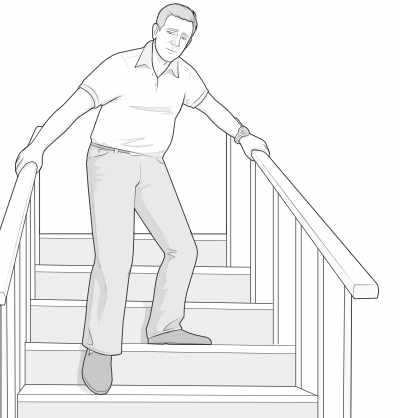Knee stiffness can be a result of fluid in the joint, adhesions or scar tissue in the tissue folds, bony deformity or other mechanical obstructions.
 Page updated February 2024 by Dr Sheila Strover (Clinical Editor)
Page updated February 2024 by Dr Sheila Strover (Clinical Editor)

Knee stiffness will hamper activities of daily living.
Defining 'stiffness'.
One needs to differentiate between a feeling of stiffness and an actual loss of range of motion. One might 'feel stiff' getting up from a chair, but regain full mobility after a few steps. This might be due to some inflammation of the lining of the joint, with a small excess of joint fluid. Some conditions may result in a limp, with a reduced active range of motion, but a helper may be able to passively improve the range of motion. This may be due to something like a tendon inflammation or some early adhesions in the soft tissues around the joint. If there is still a loss of range of motion even with assistance then this might be due to a fixed structural deformity, like scar tissue or a bony obstruction.
Preventing knee stiffness after surgery.
After surgery, a CPM machine can be used to keep the knee moving slowly to prevent adhesions between the soft tissues in and around the joint.
The dreaded complication of arthrofibrosis.
Certain knee problems lead to real scarring between the soft tissue planes of the knee joint. The scarring begins as adhesions, which are simply a challenge during rehabilitation, but then the adhesions undergo change and become proper fibrotic scar tissue, and then the scar tissue contracts down. So the stiffness gets worse and worse.
This is called arthrofibrosis. Some people are particularly prone to this kind of scarring, but in others the triggers may be inflammation or infection or a long period with the knee immobilised. Or a combination of these factors.
Quick links
Forum discussions
- Am I worrying for no reason?
Rehab after a major knee injury. Patients discuss how much stiffness is acceptable and when to start worrying about not regaining range of motion.
Peer-reviewed papers
-
Quote:
"Knee stiffness or ankylosis is not an uncommonly seen condition in clinical practice....[due to] intra-articular fibrosis of the knee....It is common (14.5%) after traumatic knee injuries and external fixation of the fractures...."
Citation: Vaish A, Vaishya R, Bhasin VB. Etiopathology and Management of Stiff Knees: A Current Concept Review. Indian J Orthop. 2020 Oct 20;55(2):276-284. doi: 10.1007/s43465-020-00287-0. PMID: 33927806; PMCID: PMC8046887.
Relevant material -
- Adhesions
- Arthrofibrosis
- Arthritis
- Range of motion (ROM)
- CPM Machine
- Manipulation under anaesthesia
- Patellar mobilisations
- Lying wall slides
- Assisted flexion
- Low load prolonged stretching
- Passive extension
 2017 - Video - Surgical procedures carrying increased risk of leaving a patient with a stiff knee - by Mr Sebastiano Nutarelli (Physiotherapist) and Dr Sheila Strover (Clinical Editor).
2017 - Video - Surgical procedures carrying increased risk of leaving a patient with a stiff knee - by Mr Sebastiano Nutarelli (Physiotherapist) and Dr Sheila Strover (Clinical Editor).
 2014 - Paper - the stiff knee after total knee replacement - surgical considerations - by Dr Sheila Strover (Clinical Editor)
2014 - Paper - the stiff knee after total knee replacement - surgical considerations - by Dr Sheila Strover (Clinical Editor)
Journal interpretations -
- 2001 - Motion loss after ligament injuries to the knee - journal article authored by Millett et al. and interpreted by editor Dr Sheila Strover (Clinical Editor)